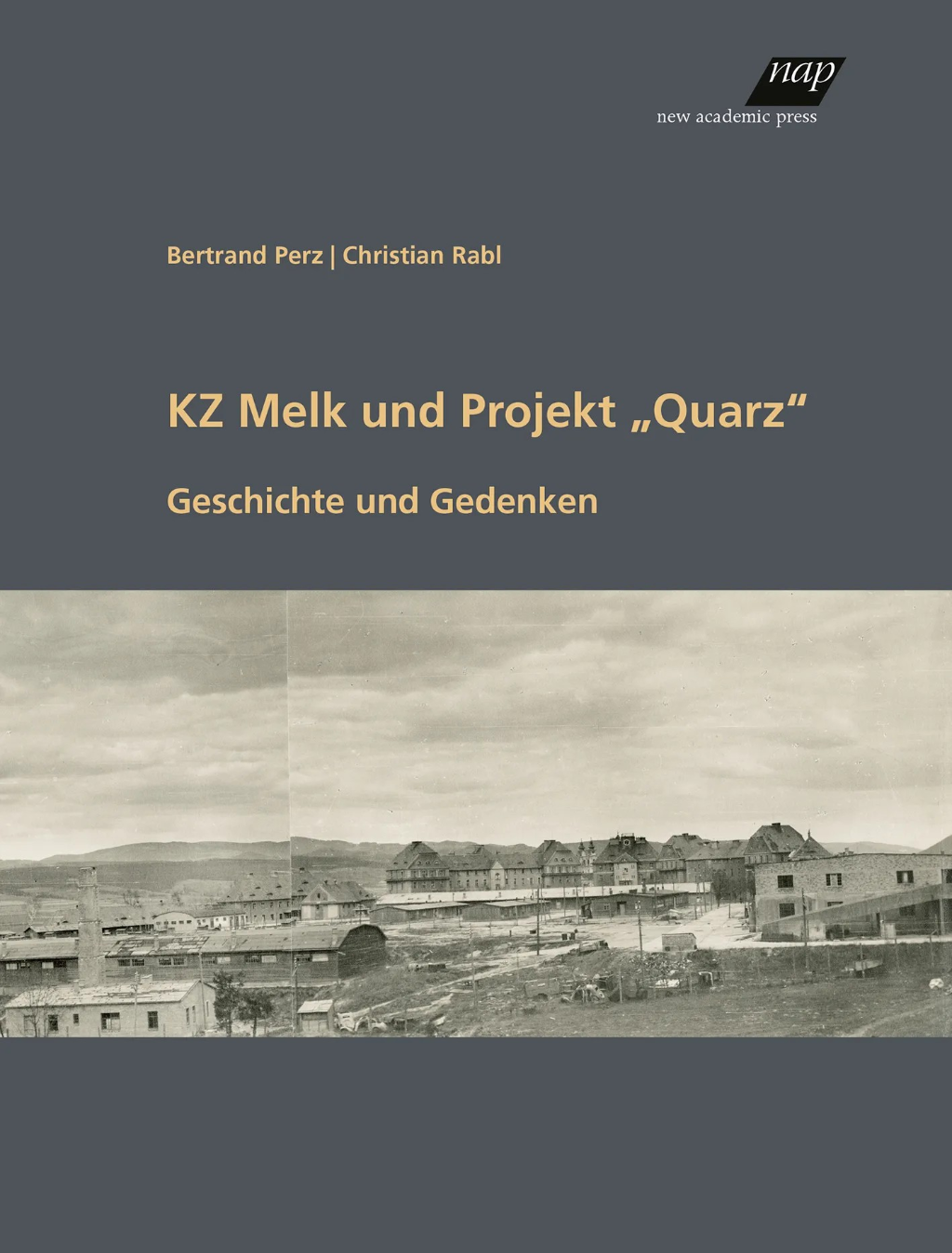Bertrand Perz and Christian Rabl: KZ Melk und Projekt „Quarz“
 The fact that a satellite camp of the Mauthausen concentration camp existed in the town of Melk from 1944 to 1945 is little known to the public. Over 14,000 concentration camp prisoners were deported to Melk within a year for the construction of a huge underground factory under the code name ‘Quarz’. This was to enable the armaments companies Steyr-Daimler-Puch AG and Flugmotorenwerke Ostmark to continue production protected from Allied bombing. Almost 5,000 people died as a result of the murderous working and living conditions.
The fact that a satellite camp of the Mauthausen concentration camp existed in the town of Melk from 1944 to 1945 is little known to the public. Over 14,000 concentration camp prisoners were deported to Melk within a year for the construction of a huge underground factory under the code name ‘Quarz’. This was to enable the armaments companies Steyr-Daimler-Puch AG and Flugmotorenwerke Ostmark to continue production protected from Allied bombing. Almost 5,000 people died as a result of the murderous working and living conditions.
In the first part of the book, Bertrand Perz examines the political, military and economic interests behind the ‘Quartz’ project and shows how the implementation of these interests by ministries, the SS, armaments and construction companies affected the living conditions of the prisoners.
In the second part of the book, the post-history of the Melk concentration camp and the ‘Quartz’ project from 1945 onwards is presented in detail for the first time. Initially, the impetus for the establishment of a memorial site in the former crematorium came from the survivors' associations. For a long time, these were opposed by the refusal of large sections of Austrian society to deal with their own past, as well as the official state victim thesis. From the 1980s onwards, the history of the camps became the focus of historical scholarship. At the same time, civil society initiatives were formed that continue to actively shape the commemoration of the victims of the Melk concentration camp to this day.
Christian Rabl explains why the preservation of the former crematorium was so controversial and why the Melk memorial site was not recognised throughout Austria for a long time. He traces the resistance that had to be overcome to establish an appropriate culture of remembrance and professional knowledge transfer.
The book is available in bookshops and on the website of new academic press.